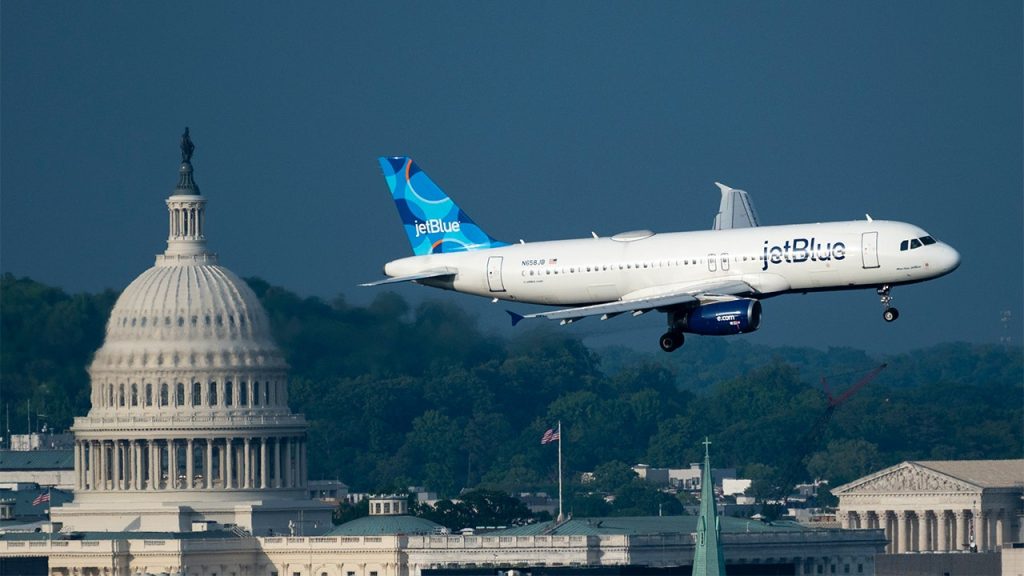Ronald Reagan Washington National Airport (DCA), nestled along the Potomac River and just minutes from the heart of Washington, D.C., has long been a source of concern for those familiar with its operations. Its proximity to the nation’s capital, while convenient for government officials and lobbyists, presents unique challenges, prompting many, including seasoned pilots and members of Congress, to express anxieties about the airport’s safety and operational capacity. The tragic midair collision between an American Eagle flight and an Army Black Hawk helicopter in 1994, resulting in 67 fatalities, underscored these concerns and ignited a national debate about the airport’s future. The incident brought to light the complex navigational demands placed on pilots operating in DCA’s airspace, navigating a narrow corridor over the Potomac while avoiding restricted airspace surrounding the Pentagon, the White House, and the U.S. Capitol.
DCA’s distinctive layout contributes to its operational complexities. The airport’s short runways, a legacy of its original design, present challenges for larger aircraft and necessitate precise approaches and landings. Its intersecting runways, an unusual configuration in modern airport design, further complicate ground operations and create the potential for runway incursions, as evidenced by two near-miss incidents in the spring of 2023. The airport’s capacity has been consistently strained, handling significantly more passengers than its intended design. Designed for 14 million passengers annually, DCA saw its traffic surge to 25 million in 2023, requiring the airport to manage approximately 800 takeoffs and landings each day. This high volume of operations, coupled with the complex airspace and runway limitations, amplifies the risk of incidents.
The airport’s strategic location, so close to the centers of American power, has made it indispensable to those who conduct the nation’s business. The convenience it offers to members of Congress, administration officials, and lobbyists has made it a crucial hub for travel to and from the capital. This convenience, however, comes at a cost. The airport’s proximity to key government buildings and monuments raises significant security concerns, particularly in the wake of the 9/11 terrorist attacks. The potential for a hijacked aircraft to target these symbols of American democracy became a stark reality, prompting serious discussions about permanently closing the airport.
The debate surrounding DCA’s future has been deeply intertwined with the needs and priorities of members of Congress. Their busy schedules, often requiring frequent travel between Washington and their home districts, have made the airport’s close proximity invaluable. Terms like “fly-in” days and “getaway” days have become ingrained in Congressional lexicon, reflecting the importance of air travel in the modern legislative process. This reliance on DCA has given lawmakers a vested interest in its continued operation, despite the safety and security concerns raised by experts and officials. This influence is evident in the repeated expansions of the airport’s capacity, including the authorization of additional flight slots, often against the wishes of local representatives concerned about noise and congestion.
The 2024 reauthorization of the Federal Aviation Administration (FAA) exemplified the political dynamics surrounding DCA. Despite concerns about increased congestion and potential safety risks, Congress approved additional daily flight slots, further increasing the airport’s already strained capacity. The strong support for these expansions within Congress, despite opposition from local senators representing the Washington, D.C., area, underscores the powerful influence of lawmakers who rely on the airport’s convenience. The confirmation and immediate crisis faced by Transportation Secretary Sean Duffy, who subsequently tightened airspace restrictions for helicopters around DCA, further highlights the complex interplay of safety concerns and political pressures surrounding the airport.
The continued operation of DCA, despite its inherent challenges, reflects the tension between convenience and security, between the needs of those who wield power in the nation’s capital and the potential risks posed by its unique location and operational limitations. The airport’s proximity to the centers of American government makes it an indispensable hub for those who conduct the nation’s business, but it also makes it a potential target for those who seek to disrupt it. The ongoing debate about DCA’s future underscores the complex and often conflicting priorities that shape aviation policy in the United States. As long as the White House, the Capitol, the Pentagon, and the countless federal agencies and lobbying firms remain clustered around Washington, D.C., Reagan National Airport, with all its complexities and challenges, is likely to remain a fixture in the nation’s aviation landscape.

